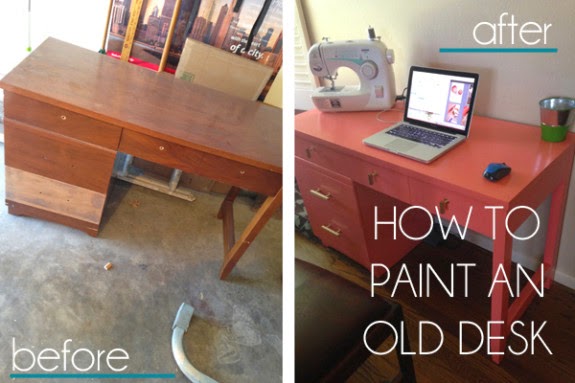Back in December, I painted the wainscoting:
PAINTING A BREAKFAST NOOK WALLS
I did two coats along with a couple of touch-up spots here and there, but for the most part, the process was pretty straight-forward.
PAINTING A BREAKFAST NOOK CEILING
FYI, painting ceilings sucks. I actually like to paint. I find it rather relaxing and really rewarding, but ugh, I can’t say I feel that way when it comes to the ceilings. It’s flat-out uncomfortable. I even had the roller on a long pole, but I still have to arch my neck up and dig the pole into my hip for leverage and pressure. I’m not really looking forward to painting the ceilings in the rest of the house, but I know once it’s done, I’ll be so happy. If anyone has any good tips for painting the ceilings, I’d LOVE to hear them!!
I unscrewed the faceplate of our pendent light over the table so I could cover every possible inch while painting the breakfast nook ceiling.
Can you see the difference? Before I took the tape off, Nick thought I was painting the ceilings the same color as the walls. I assured him that they were in fact two totally different colors.
HARD WORK PAYS OFF WHEN PAINTING A BREAKFAST NOOK
See, the ceiling and walls ARE different colors!
I think it looks a thousand times better than the painted-to-sell shade of beige!
LESSONS LEARNED FROM PAINTING A BREAKFAST NOOK
Paint the ceiling BEFORE you paint the walls! I find it a lot easier to paint the walls versus the ceiling and with that, I also found that I made more mishaps with the ceiling. In other words, I ended up painting the walls the ceiling color at certain points (drips through the tape, me just being careless and I carried the roller on a pole around the room). Since I painted the walls first, I had to go back after painting the ceiling and re-touch-up the walls. Moving forward, I’ve learned my lesson and will be painting the ceilings first, that way if I have any mishaps, I’ll be painting over the walls in the next step anyway, so I’m spared the re-touch-up step. I don’t know if that will work for you, but I know it will help me as I move forward.
Happy painting everyone!





























